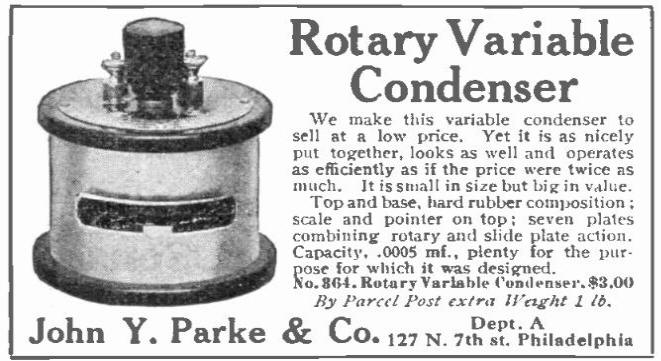|
In mahogany housing with ebonite
front and knobs nickeled brass
contacts. |

|
Advertisement for a tuning
capacitor by the company in Popular Electricity
from June 1913 |
| The original price was about
$21. |
|
|
Loose couplers were used in the '10s of the
twentieth century.
The device consists of two coils, a primary and a secondary.
|
|
The primary coil is stationary and is equipped
with a compound switch with 34 (16 + 18) contacts so that the inductance of the coil
can be adjusted. |
|
The secondary coil can be slid in and out of the
primary coil to vary the degree of coupling and is also equipped
with a slider and 12 contacts so that the inductance can
be changed there too. This model is also called "Navy type
transformer". |
|
By means of a "dead end switch", mouted on the
panel, the major part of the primary winding may be entirely
disconnected from the circuit when receiving on low wave
lengths. |
|
A loose coupler was the first tuning tool in an
early receiver.
The first coil was connected to an antenna and a ground;
the second coil was connected to a detector, in most cases a
crystal. Wave lengths
of 200-4000 meters may be tuned to. |
|
John Y. Parke & Co.
made all kinds of technical articles as early as the 19th
century.
The company was located in Philadelphia, 127 North 7th Street.
|